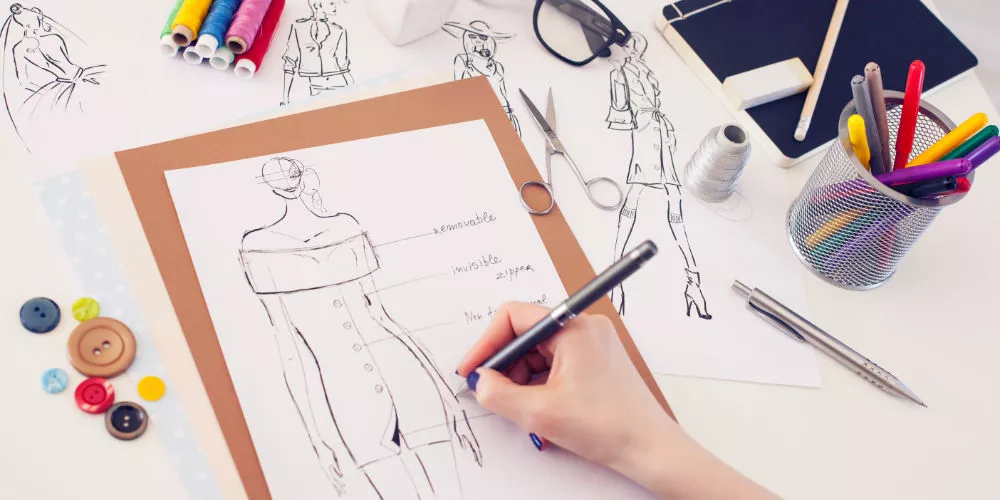The tech pack is the standard design file needed by manufacturers in order to produce a particular clothing product. It is the garments manufacturing instruction manual for the clothing manufacturer of your choice. All of the information and details of the product can be found inside the tech pack including illustrations and sketches in different perspectives. As long as the tech pack is ready, a clothing product can right away be manufactured in the factory regardless of who the manufacturer is going to be. Let us break down the important elements found in a clothing tech pack so that it can serve as a checklist for you.
The 7 Main Elements of a Tech Pack Summarized in 1 Infographic
Technical Drawing
- The technical drawing describes the fundamentals of the product covering the cut, design elements and dimensions. This is the foundation for you tech pack and you clothing design. It is usually directly based on your drawing and/or your reference products.
Comments
- Comments are added to further describe the parts lined out in the technical drawing. They also include basic specifications if necessary. It helps to better and more quickly understand the technical drawing. The exact specifications are not lined out in detail here but just some basic description that allow to double check the entire design quickly.
Fabric Specification
- Your product is more than just cotton or polyester; you need to define the structure of the fabric so that it feels the way it should. Know the composition, weight, weave & color. There are standard fabrics for specific clothing designs that you can google. You can also check the fabric composition of reference clothing pieces for the composition and try to find out the weave that is usually not specified in clothing labels.
Accessories
- The accessories are the details (such as buttons, zippers, straps, patches etc.) that make the product final. It has to be ensured that they are exactly defined. You have to consider that it can be very difficult to find e.g. the exact button you want. The more exotic the harder it will be to integrate in an exact way.
Stitching
- There are many different styles of stitching that can be used to put fabric together. The right one for each seam has to be determined. Make sure that both functionality (such as stability) as well as aesthetic aspects are met. Nice stitching can add value to a design and doesn’t have to be hidden.
Prints & Embroideries
- Deciding to have a logo is not enough! You need to define the printing or stitching method as well as the sizing and position. There are several different ways to do prints (heat transfer, screen print, sublimation) that have different textures as well as advantage and disadvantages. Make sure to look into that to specify it correctly. Embroideries are a bit easier to define, but also here you have differences with respect to the yarn thickness, colouring and similar aspects.
Sizing
- The basic dimensions and length for each part have to be adjusted to the person wearing it. It has to be made sure size S fits as well as M, L, XL and so on. There are standard sizing charts and measurement standards available on many big clothing retailers websites that you can check. You can also check and measure a garment you already have as reference of course.
If you have all these fundamental elements of a tech pack defined well, there is a much lower risk that something will go wrong with the clothing or sample production process. The more you specify your design in the tech pack the better it is. Make sure to double check the specifications follow industry standards and that all aspects of the check list above are covered. You might want to double check with a company that makes tech packs for you. Also check here how the clothing design process works in more detail.





